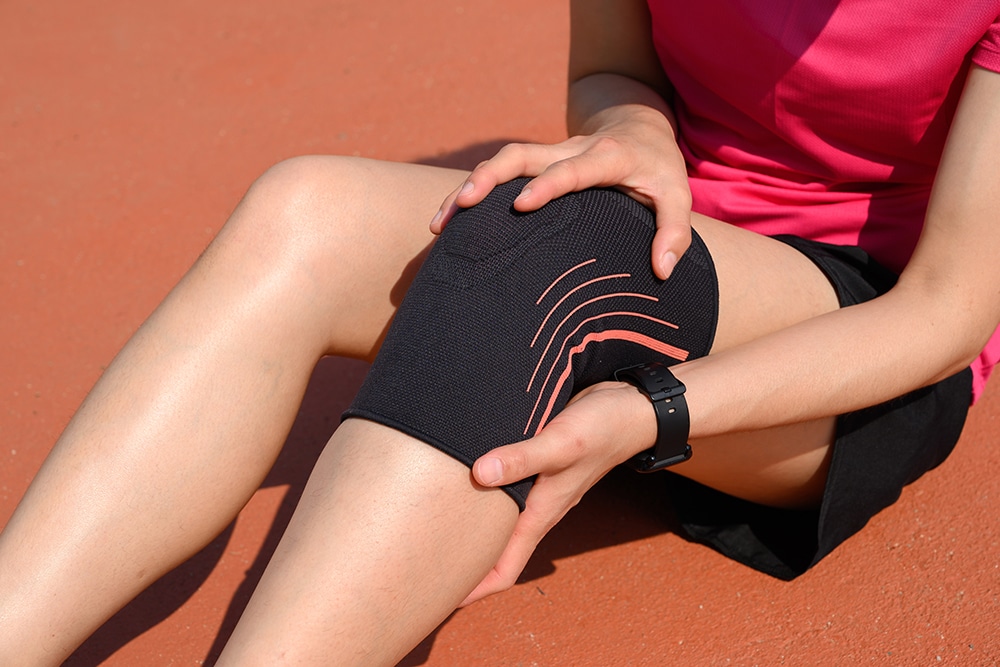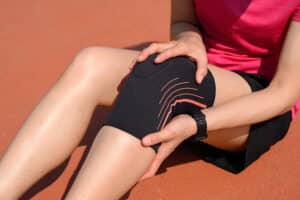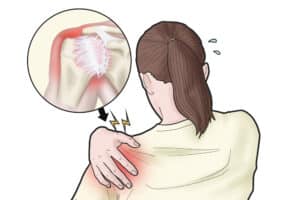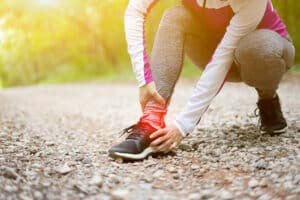For athletes and fitness enthusiasts, maintaining peak physical condition is paramount. However, the pursuit of athletic excellence often comes with its fair share of challenges, including injuries that can impede performance and disrupt training routines. One such common ailment is Iliotibial Band Syndrome (ITBS), a condition that frequently affects runners, cyclists, and individuals engaged in repetitive knee-bending activities.
ITBS is characterized by pain on the outer side of the knee, caused by the inflammation of the iliotibial band—a thick band of connective tissue extending from the hip to the shin. This condition can be both debilitating and frustrating, often sidelining athletes and impacting their ability to perform at their best.
Understanding the nuances of ITBS is crucial for effective management and recovery. The journey to overcoming this condition involves a multifaceted approach, with physiotherapy playing a central role. Through targeted exercises, manual therapies, and education on proper biomechanics, physiotherapy not only alleviates the symptoms of ITBS but also addresses its root causes, paving the way for sustainable recovery and prevention of future occurrences.
In this blog post, we will explore the intricacies of Iliotibial Band Syndrome, from its causes and symptoms to diagnosis and treatment options. We will delve into how physiotherapy can be a game-changer in managing ITBS, offering insights into specific techniques and strategies that can help athletes return to their peak performance levels. Whether you are an athlete grappling with ITBS or a fitness enthusiast looking to prevent it, this comprehensive guide will equip you with the knowledge to tackle this condition head-on.
What is Iliotibial Band Syndrome?
Iliotibial Band Syndrome (ITBS) develops when excessive friction leads to pain on the outer side of the knee. The iliotibial band, commonly known as the “IT band,” is a band of connective tissue running along the outer thigh from the pelvis to the knee. As it nears the knee, it thickens as it passes over a prominent part of the femur, called the lateral femoral condyle, before attaching to the tibia. It also connects to the tensor fascia latae and gluteus maximus muscles near the pelvis.
Friction and subsequent inflammation occur when the IT band rubs against underlying structures during repetitive knee movements, such as straightening and bending. This typically happens with activities involving overuse, like running and cycling.
According to Physiopedia, “ITBS is considered a non-traumatic overuse injury, often seen in runners, and is often concomitant with underlying weakness of hip abductor muscles.”
ITBS affects various structures in the lower extremities, including muscles, bones, and other soft tissues.
The pain often stems from:
- Excessive friction between the IT band and the thigh bone.
- Poor alignment or muscular control in the lower body.
- Continuous pinching or rubbing forces during repetitive activities.
Key structures involved in ITBS include:
- The iliotibial band.
- The bursa, a fluid-filled sac that reduces friction between bones and soft tissues.
- Hip muscles.
Causes of Iliotibial Band Syndrome (ITBS)
Several factors can contribute to the development of ITBS, including:
Overuse: Repetitive activities that involve bending the knee can cause the ITB to become irritated.
Biomechanical Issues: Poor running form, leg length discrepancies, or abnormal foot mechanics can increase the risk of ITBS.
Weakness or Imbalance: Weak hip muscles or imbalances between different muscle groups can place extra strain on the ITB.
Improper Training: Rapid increases in training intensity, frequency, or duration without adequate rest can lead to ITBS.
Symptoms of Iliotibial Band Syndrome (ITBS)
The primary symptom of ITBS is stabbing or stinging pain on the outer side of the knee, which may be accompanied by:
- Swelling or a burning sensation near the outside of your knee.
- A clicking or snapping sound when the knee bends and straightens.
- Occasional tightness and pain at the outside of the hip.
- Pain that worsens with activity, particularly during running or cycling.
- Discomfort when walking or climbing stairs.
Pain is typically most severe when the knee is slightly bent, either just before or immediately after the foot touches the ground. This position maximizes the friction between the IT band and the thigh bone.
Iliotibial Band Syndrome (ITBS) Diagnosis
Diagnosis of ITBS typically involves a physical examination and a review of the patient’s medical history. During the physical examination, your physiotherapist will often employ specialized tests and conduct a movement analysis. This process helps the physiotherapist gather insights into your movement patterns and identify any contributing factors to your injury. The evaluation may include an assessment of your walking or running mechanics, lower body alignment, foot structure, and balance. The physiotherapist might ask you to perform the activity that triggers your pain to observe your movement when the discomfort occurs.
For athletes, the physiotherapist may inquire about your sport, footwear, training routes, and exercise regimen to gain a comprehensive understanding of your routine and potential causes of ITBS.
In some cases, imaging tests such as MRI or ultrasound may be used to rule out other conditions.
Managing and Treating Iliotibial Band Syndrome (ITBS)
Physiotherapy is a cornerstone in the management of ITBS. A physiotherapist can develop a personalized treatment plan that addresses the underlying causes of ITBS and helps alleviate symptoms. The treatment is generally divided into three distinct phases: the acute phase, the subacute phase, and the recovery strengthening phase. Each phase has specific goals and interventions aimed at reducing pain, promoting healing, and restoring function, with a physiotherapist playing a crucial role throughout the process.
Acute Phase
In the acute phase, the primary focus is on alleviating pain and minimizing inflammation. This involves rest: activities that aggravate the condition, such as running or cycling, are limited to allow the IT band to recover. Ice therapy is commonly used, with ice packs applied to the affected area several times a day to reduce swelling and pain. Over-the-counter nonsteroidal anti-inflammatory drugs (NSAIDs) can help manage pain and inflammation.
Gentle stretching helps maintain flexibility without aggravating the injury, while compression bandages and elevating the leg can help reduce swelling. During this phase, a physiotherapist may utilize manual techniques to reduce pain and inflammation and provide advice on activity modification.
Subacute Phase
Once the acute symptoms have subsided, the treatment progresses to the subacute phase, which aims to restore flexibility and introduce gentle strengthening exercises. During this phase, stretching is increased in intensity and duration to improve IT band flexibility. Foam rolling is introduced to massage the IT band and surrounding muscles, releasing tightness and improving tissue mobility.
Low intensity strengthening exercises begin, focusing on the hip abductors, glutes, and core muscles, which are crucial for stabilizing the knee and reducing strain on the IT band. A physiotherapist will guide these exercises to ensure correct form and progression, and may also employ manual therapy to address any muscle imbalances or joint restrictions.
Recovery Strengthening Phase
The final phase of ITBS treatment is the recovery strengthening phase, which focuses on building strength and stability to prevent future episodes. This phase involves progressively increasing the intensity and complexity of strength training exercises to enhance muscle endurance and stability around the hip and knee.
Functional training is incorporated, including sport-specific or activity-specific exercises to prepare the body for a return to normal activity or athletic performance. A thorough gait analysis is conducted to identify and correct any biomechanical issues that may have contributed to ITBS.
Additionally, patients receive education from their physiotherapist on proper techniques for stretching, strengthening, and avoiding overuse, including guidance on appropriate footwear, training routines, and avoiding sudden increases in activity levels.
Preventing Iliotibial Band Syndrome (ITBS)
Prevention is always better than cure. To reduce the risk of developing ITBS, consider incorporating several key practices into your exercise regimen.
By following these tips, you can significantly reduce your risk of developing ITBS:
- Begin with proper warm-up and cool-down routines to prepare your muscles and joints for activity and aid in recovery afterward.
- Gradually increase the intensity, duration, and frequency of your activities to avoid overloading your muscles and joints too quickly.
- Regular strength training exercises are essential for maintaining muscle balance and joint stability, while incorporating stretches for the ITB and related muscles can help maintain flexibility.
- Wearing appropriate footwear that provides adequate support and cushioning is crucial for preventing undue strain on your legs.
The Role of Physiotherapy in Iliotibial Band Syndrome (ITBS)
Iliotibial Band Syndrome is a common and often frustrating condition, but with proper management and preventive measures, it is entirely manageable. Physiotherapy plays a pivotal role in treating ITBS, offering a range of techniques to alleviate pain, address underlying causes, and prevent recurrence. If you suspect you have ITBS, consulting with a physiotherapist can set you on the path to recovery and help you return to your favourite activities pain-free.
Get Started Today!
Seeing a professional physiotherapy provider like Nova Physiotherapy can offer expert care, personalized treatment, education, and a holistic approach to Iliotibial Band Syndrome. If you’re considering physiotherapy, contact the friendly and experienced team at Nova Physiotherapy. We’re ready to help you on the road to better health.








